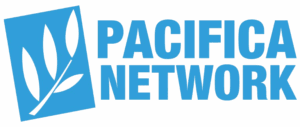Improve Your Radio Reception: Retro Knowledge For A New Generation
For cord-cutters or those who are looking for an OTT option and want to improve your over-the-air radio reception, why not consider an old fashioned solution– a home antenna? If you live on the fringes of KMRE’s broadcast signal there are things you can do to improve your FM reception. (Of course, you can also listen online on this website.)
Here are some low cost ideas for improving your individual reception.
Factors Affecting Reception
FM radio waves can be affected by many factors ranging from terrain to equipment. In general, FM transmissions are lines of sight — similar to light waves. KMRE’s 2,000 watts are transmitted from King Mountain Mountain (elevation 540 feet). Unless an object (building, ridge, mountain, etc) is between you and Blue Hill, you should have clear reception up to 15 miles from the transmitter. After 15 miles, reception becomes a factor of the strength of the signal, as much as your location in relation to the transmitter. We have regular listeners (and members) in Lynden, Custer, and north Ferndale. In these cases, terrain and equipment are major players; these folks probably live on hills, and/or have outside rotorized (pointable) antennas.
Following are some suggestions for improving home reception through the addition or adjustment of receiving antennas. These methods may or may not work, but improving your antenna is the single best solution to reception problems (short of moving or installing a translator). The solutions offered here range from things you can do for free, to equipment you can purchase. We are not selling equipment, just passing along tidbits of verified reception lore for your listening pleasure.
Antennas: Some General Concepts
- An antenna is a “collector” of radio signals that improves your reception by providing more signal than would be otherwise supplied to the receiver.
- An outdoor antenna is preferable to an indoor antenna.
- A high location is better, whether it be the roof, a hill out back, or the top shelf of a bookcase.
- Many things in a house can affect reception, so as a first step, try your radio or antenna in different spots in the house.
- YOU are an antenna! If you improve reception by standing near or touching the radio or antenna, your system is telling you it needs a better antenna.
- A rotorized (pointable) antenna is preferable to a stationary antenna. A fixed-position FM antenna should be pointed toward Blue Hill Mountain.
Your Radio
Determine whether or not your radio has antenna terminals for attachment of an antenna. These would appear as:
- Screws on the back labeled “ant. 300 ohms” or
- A coaxial cable connector labeled “coax/ant. 50 ohms” (W=ohms)
Otherwise, your radio has either an internal antenna that you can’t see or a telescoping antenna. Either way, skip ahead to the section “No Antenna Terminals.”
Connecting an Antenna to Your Radio
There are two different types of antenna cable, flat two-conductor wire known as “twin lead” that is 300W, or round plastic coated wire that is known as “coaxial” or “coax” that is 50-75W. Coax is what cable companies use, and is a much better cable, but it is more expensive. You’ll have to decide which to use if you are installing a new antenna or cable. Other than conducting a stronger signal, coax is useful in situations requiring the elimination of interference cause by nearby electric motors, computers, etc. We’d be glad to advise you.
If you have a TV antenna already installed, purchase a “FM Splitter” at a radio supply store. Follow the instructions, hooking up the “FM output” of the splitter to the radio and using the “TV output” to restore the connection to your TV. Experiment attaching wires to one screw and then the other to see what gets the best reception; the only rule is “do whatever works best”.
If you receive your TV signal via a cable system and your TV antenna is unused, then just hook it up to your antenna terminals on the radio and you should have dramatically better reception. If your cable system has an FM service, find out if WERU is carried. If it is, you may want to subscribe to the FM service and eliminate any antennas, or use them in conjunction with the cable service; if it is not carried you may want to lobby your cable company to add WERU to the FM service. Often cable companies ware able to furnish very good signals at great distances from the transmitter. We would be glad to assist you in this effort.
If you are still experiencing reception problems after connecting an antenna, try aiming your antenna directly at King Mountain. If aiming the antenna at King Mountain causes reception problems with other TV or radio stations, consider:
- installing a motorized rotor to move your antenna from inside,
- dedicating an FM antenna to permanently point to King Mountain, or
- dreaming up some unique arrangement allowing for pointing the antenna, like the one described in the last section, “Other Ideas”.
Using a Di-Pole Antenna
Di-poles are T-shaped wire antennas made for indoor use. You can buy them in radio supply stores, and they are inexpensive.
Attach the bottom leg of the T to the antenna terminals of your radio (experiment while attaching) and then play with the location of the T. The placement of the T is critical to the performance of the di-pole.
If you are really bold, or crave WERU reception on a budget, you can make a custom di-pole. The advantage is that you can greatly increase a di-pole’s effectiveness by its size and/or placement outside! You’ll need some of the twin lead cable we mentioned earlier.
The custom di-pole you make will be a T just like the ready-made you might buy, except you’ll be able to tailor it to your needs. However, you need to abide by these, or multiples of these, dimensions; the top bar should be 5’1″ or 10’2″ or 15’3″ or 20’4″, etc. and the bottom leg must connect at the middle of that top bar (2’6″, etc.) You can drape custom di-pole over the roof of your house, or climb the tree in your front yard and tie it to the appropriate branches (of course, experimenting tirelessly to find the proper orientation of the di-pole for best reception). Twin lead is so cheap that you may find yourself quite proud of the dramatic improvement in reception for a bit of time, but very little money.
However, don’t kid yourself about the effectiveness of a custom di-pole versus a traditional metal TV/FM antenna.
Cut an appropriate length of twin for the top bar. In the middle of that length cut one of the two conductors and strip back the plastic coating. Now connect another length of the twin lead to the two bare conductors of the top bar. The other end is connected to your radio antenna terminals.
If a custom di-pole sounds like too much trouble, you can make a cut-and-split di-pole. Take some twin lead and split it down the middle. Attach the other end to the radio. Very simple, though not as effective as the custom di-pole.
No Antenna Available? Make a Wire Antenna
Homemade antennas can work very well. Often a piece of wire becomes an antenna without much fuss at all. It can be thick or thin wire, and free or cheap is the best wire around. Wire with a plastic coating is safer (remember to strip any coating away to allow connection of the wire to the antenna terminals), but bare wire is fine.
Use any piece of wire. Attach it to an antenna terminal. Run it over drapery rods and window casings. Throw it out the window and into the nearby tree. Toss it onto the roof. Do the same with two wires. Spend some time experimenting with the placement of these wires; often opposite directions work well. If this is strictly an inside job make sure that you arrange these wires so that you’ll be proud to point them out to visitors. “See my antenna; I get KMRE loud and clear!”
No Antenna Terminals
Clock radios normally don’t have any antenna terminals or telescoping antennas. Try wrapping lots of wire around the radio; don’t connect the wire to anything. The idea is to get a thick loop of wire near the radio.
Almost any large metal structure above ground can act as antenna. Aluminum rain gutters, air conditioning and heat ducts, metal window frames, aluminum siding and metal roofing are great antennas. NEVER USE an electrical outlet as an antenna. using an alligator clip, clip to one of these the previously mentioned massive loop of wire surrounding your clock radio. Wow!
Other portable-type radios have telescoping antennas that may be improved by wrapping a “flag” of aluminum foil around the top, or attaching a length of wire to the telescoping antenna. That length of wire might get thrown in the tree next to your garden as your are gardening and listening to the radio, or more permanently attached to the rain gutter outside your bedroom window, or tossed on the roof.
Other Ideas
- Rabbit ears are cheap. Strap them to your chimney, or climb a tree and place them carefully according to the reception data your friend yells out the window to you. Rabbit ears are not intended to be placed outside, as they will deteriorate to the point of uselessness. But, in our experience this happens only after many years. Or try putting them in your attic.
- Select MONO on your receiver. For reasons beyond the scope of this pamphlet, MONO signals travel farther and have less noise in them.
- Buy a booster or amplifier for your existing antenna. Sometimes they work wonders, sometimes they just work. Boosters need a certain amount of signal to work with, otherwise they end up amplifying noise rather than audio.
- Here is an “attic solution” offered by a listener of KSER near Seattle: “I installed a radio-TV antenna (a.k.a. yagi) in my attic. I have some string attached to it and can rotate it from a closet near the radio. I can position it for KSER or various TV stations. The vertical rod is a broomstick. I get about 90 degrees rotation. The advantage is that I’ve eliminated the expenses of mounting the antenna outdoors and a rotor, but I still have it in a relatively high place and can position it easily.”
Purchase a Custom-made Antenna
Directive Systems, a small antenna manufacturing company in southwest Maine, produces an antenna that some listeners may find to be a worthwhile investment. For more information contact David Olean at RR#2 Box 282, Dixon Rd., Lebanon, ME 04027 or 207-658-7758.




